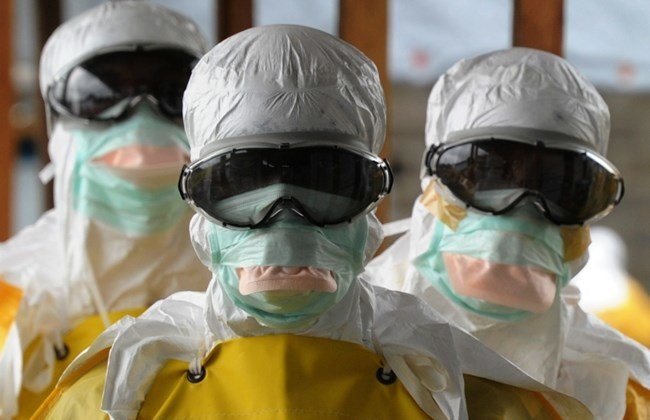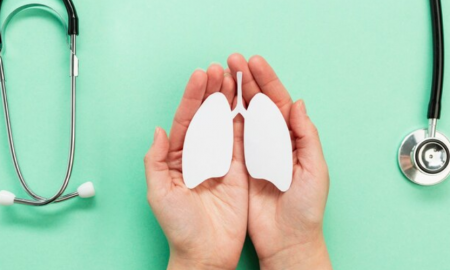
Scarlet Fever Hits England And Wales After 50 Years

In past few decades, cases of scarlet fever declined until 2014 when a dramatic increase in the fever was spotted. Currently, researchers are writing in The Lancet which explains how England is experiencing an unprecedented rise in scarlet fever with the highest incidence for nearly 50 years.
However, they are still unsure of the cause of escalation and trying to identify the cause which a priority at first place.
Their conclusion is entirely based on a survey of notifications of scarlet fever in England and Wales from January 1, 1911, to December 31, 2016.
Researchers write that population rates of scarlet fever raised by a factor of three between 2013 and 2014. This sees the rates of infection go up from 8.2 to 27.2 per 100,000 individuals.

In 2015 further increases were observed when the rate was 30.6 per 100,000, and then again in 2016 with the rise 3.3 percent i.e. 33.2 per 100,000.
In 2016 at a total of 19,206 it’s the highest number of cases and the rate of scarlet fever notification since 1967.
So what is scarlet fever?
Scarlatina or scarlet fever is a bacterial infection. Which is caused by a “group A streptococcal,” infectious disease, occurring during childhood or commonly in winter and spring.
In 2014 in England, the average age of cases was 4 years, with the occurrence of 186 per 100,000 children under the age of ten, the researchers told in The Lancet. Although adults also get it.
According to the U.S. Centers for Disease Control and Prevention, the group A Strep can cause various infections right from minor illnesses to very serious even deadly diseases.
According to the key facts provided by the World Health Organization, almost all the cases of scarlet fever are mild but certain complications can also develop such as acute rheumatic fever or acute kidney disease.
What are the symptoms?
According to the WHO lists the following are symptoms of scarlet fever:
- red lines or streaks around the armpits, elbows, and knees
- flushed face
- strawberry tongue, or a white tongue with red dots on the surface
- red, sore throat with white and yellow patches
- fever above 101°F (38.3°C)
- chills
- headaches
- swollen tonsils
- nausea and vomiting
- swollen glands in the back of the neck
- the pale skin around the lips

However, the CDC explains that cases also occur along with the strep throat, –a throat infection caused by group A Strep.
Two to six days is the incubation period from the time the infections first symptoms appeared.
How is scarlet fever transmitted?
The WHO suggests that scarlet fever spreads from one person to the other person through the respiratory droplets or through the direct contact via mucus, saliva and the skin of infected people.
Respiratory droplets are water-based however they are dried-out residuals, caused when someone breathes, sneeze, talk, or a cough containing infectious pathogens.
As compared to the other most infectious diseases, scarlet fever spreads rapidly where they find close contact with other humans in crowded situations or in a large group, like public transport, households, daycare centers, and schools.

So the best way to avoid scarlet fever is to avoid direct contact with people who are known to be infected with fever.
Also wash your hands regularly and properly, particularly after coughing and sneezing and when you are going to prepare or eat food. It is one of the best ways to break down the risk of getting scarlet fever, or from spreading it.
Children between the age group of 5 to 15 years are most vulnerable.
How is scarlet fever treated?
The most widely popular treatment is still the antibiotics, like penicillin and amoxicillin for those who are not allergic to penicillin. While people who are allergic to penicillin also have other options of antibiotics.
CDC says that if you are taking antibiotics for scarlet fever, and have taken it properly for more than 24 hours then you are no longer infectious for other people.
However, consult with your health professional for the best advice if you have any specific condition.
More in Motivation
-
`
Amanda Bynes Pregnant at 13? Debunking the Rumors
In recent years, the internet has been ablaze with rumors surrounding former child star Amanda Bynes, particularly regarding allegations of a...
July 1, 2024 -
`
Can Baking Soda Clean Your Lungs?
Years of inhaling cigarette smoke, pollution, and other toxins can leave you longing for a way to cleanse your lungs. The...
June 27, 2024 -
`
How to Build Muscle Mass After 60? 5 Proven Strategies
Curious about how to build muscle mass after 60? You are not alone. And the good news is that it is...
June 20, 2024 -
`
Prediabetic Foods That Can Lower Your Blood Sugar in 2024
Prediabetes is a health condition characterized by blood sugar levels that are higher than normal but not high enough to be...
June 13, 2024 -
`
Kelly Clarkson’s Weight Loss Journey | Here Are the Details
Kelly Clarkson’s weight loss has been a hot topic among fans and media alike. The iconic American singer and host of...
June 3, 2024 -
`
Essential Vitamins for Gut Health – A Comprehensive Guide
Our gut does more than just digest food – it plays a vital role in immunity, mood, and overall health. But...
May 30, 2024 -
`
Looking to Build A Stronger Sculpted Back? Try Cable Back Workouts
Back workouts using cables, or cable back workouts as they are commonly known, have become the gold standard for anyone aiming...
May 22, 2024 -
`
How Much Water Should I Drink on Creatine? Hydration Tips
Creatine, a popular supplement among athletes and fitness enthusiasts, has gained widespread recognition for its ability to enhance muscle strength, power,...
May 17, 2024 -
`
What Is Bruce Willis’s Net Worth? Get the Inside Scoop Here!
Bruce Willis, the action hero who has saved the day countless times on screen, has built a legendary career. But how...
May 11, 2024















You must be logged in to post a comment Login